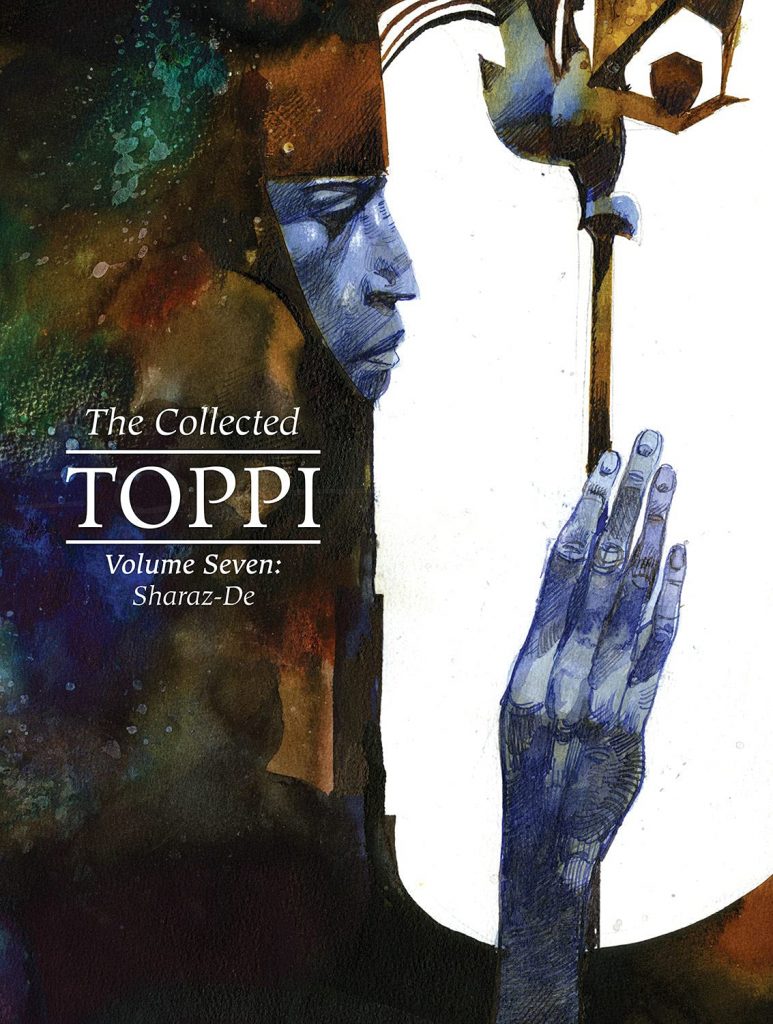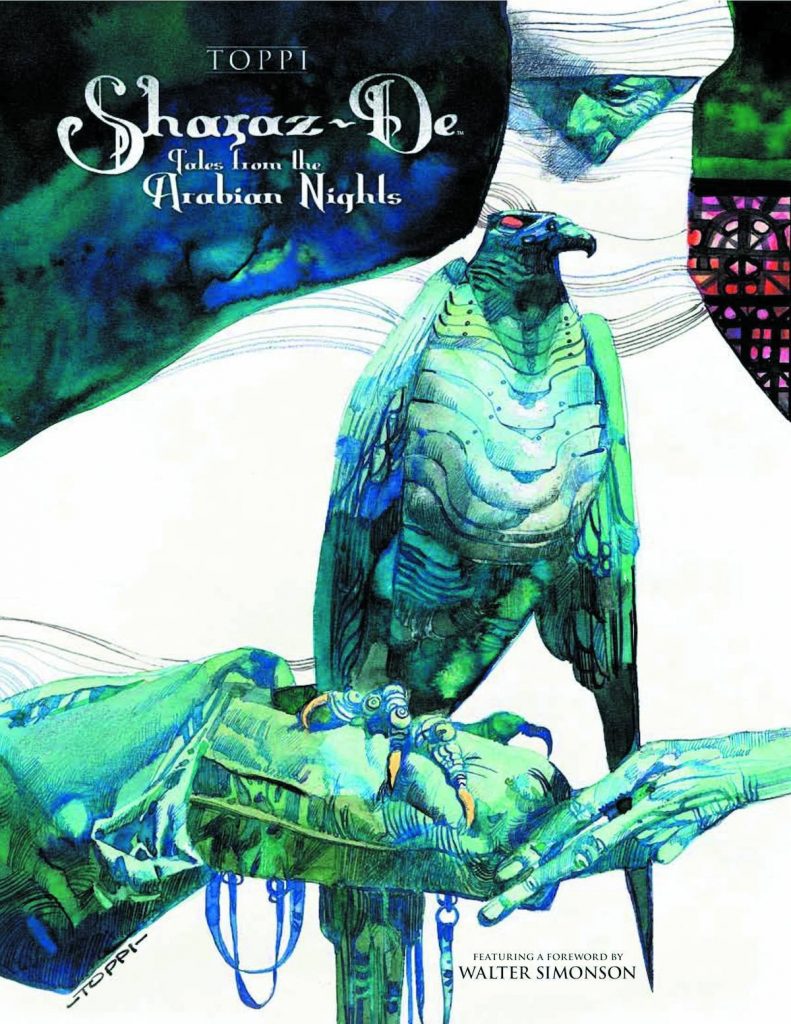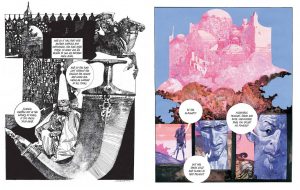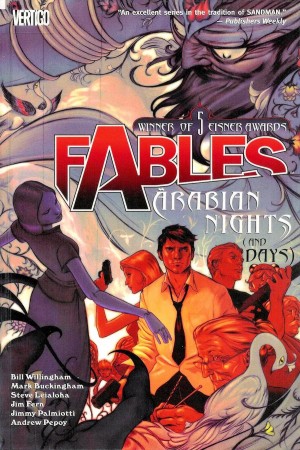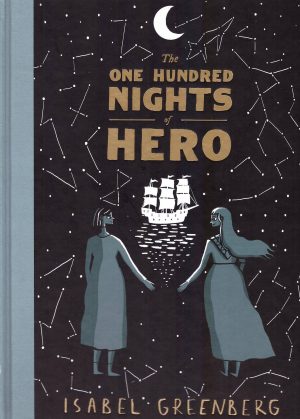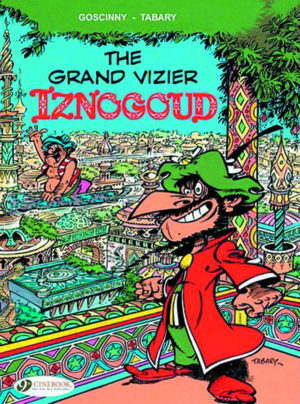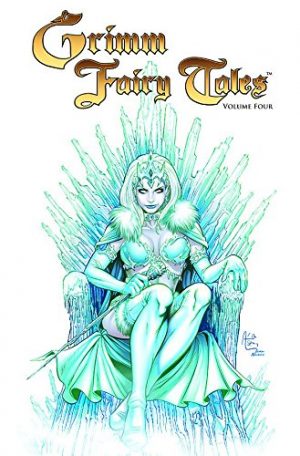Review by Frank Plowright
The 1001 Nights or Arabian Nights is a collection of exotic tales framed by the device of Scherherazade telling them to a king in order to postpone her execution for another day. The best known of the stories are Aladdin and Ali Baba and the Forty Thieves, but the book is a vast repository of exotica, and sometimes erotica, so extracting relatively unknown tales is easy.
In this collection Sergio Toppi introduces the framing device along with the explanation for something that would otherwise be irrational. He adapted ten more stories, seven between 1979 and 1981, returning to the material for three further tales in 2005. Toppi almost always avoids traditional storytelling, only very rarely confining his art in panel borders, but more so than most of his other work Sharaz-De relies on representations accompanied by text. Stunning portraits and landscapes are frequent, and Toppi recognises that the source material may be an Arabic book, but the gathered tales are sourced from a large geographical area. His people, therefore, don’t only have Arabic features, and because many of those within the tales are royalty, wealthy, djinns or magicians Toppi’s imagination takes full flight in designing resplendent and sometimes outrageous clothing for them.
There are also a greater number of colour pages than in previous collections, which isn’t quite the expected treat. Toppi’s colour sense is as unique as his illustration, but the results are variable. In black and white his messy cross-hatching shouldn’t work, but actually does, yet the bright patches of colour clash, and in doing so detract from the drawing. In his introduction Walter Simonson mentions Toppi’s bold use of white space, but the result isn’t nearly as accomplished when that space is instead filled by large areas coloured purple or pink. However, occasionally, such as the cover of Volume Three, the colouring is startlingly effective, just not very often here, although an ornately drawn pink palace catches the eye.
The stories, though, are a gift to someone with Toppi’s visual sensibilities as they indicate magic, splendour and stature without precisely describing it, so in places Toppi’s illustrations seem the missing part of the equation. There are stories within stories, and by and large they have a moral message, with the worst crime seemingly not keeping one’s word, which always results in dire consequences. What they have in common is that they still captivate. Readers today will want to know how they finish as much the king did back in the day.
Some deterioration in Toppi’s sinuous line is evident in the three later stories, most obviously seen by comparing the portraits of Sharaz-De herself, and some other faces seem two-dimensional, but by anyone else this would still be phenomenal work. While still very individual, the colour story from 2005 differs from the earlier step into colour, the backgrounds now commonly created from watercolour splodges. Toppi thinks in black and white, and his colour pages remain lesser.
An earlier English translation was issued in 2014, but until the appearance of this edition was commanding outrageous prices for used copies.
